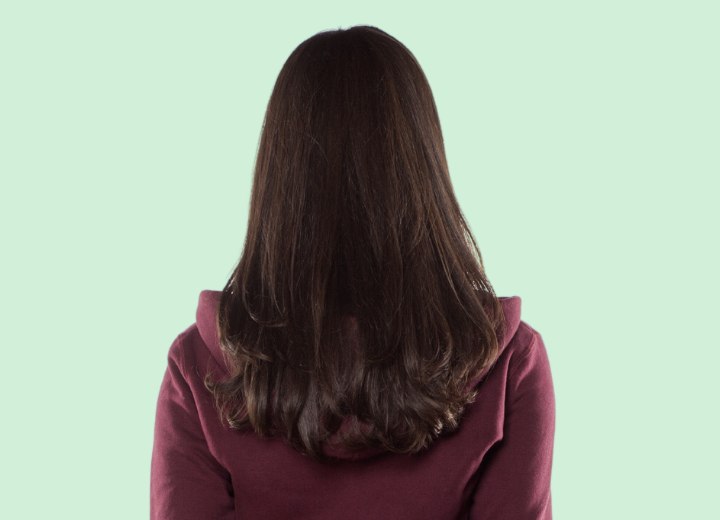How to Blend Back Lengths

If I bring all the back and sides straight up shouldn't this give my client a perfect long layered effect? I see one of your picture diagrams shows a front inward angle towards the middle of the head. At what point do you stop doing this angle in regards to the crown and back of the head?
I appreciate any extra help with this. I have a client coming this week with massively thick hair and longer layers... I tried to get out of doing it because I do not want to screw it up. Her hair is so beautiful. Help me to please perform an excellent cut that will make her happy and keep coming back.
She is a new client that is not happy with her former hairstylist. Yikes! I trust your diagrams a lot. Please send me one that clearly describes the blending of the sides to the back and at what angle is the best for her longer layers.
In many cases, once the hair is elevated and the layers cut all around the head, the stylist goes back and evens out the perimeter cutting line to provide a clean finish. Again, this depends on the specific hairstyle you are trying to achieve.
Be sure to talk to your client about precisely what she is expecting from the cut. Simply elevating all the hair to 180-degrees and cutting it off with a stationary guide will result in the hairs that originate at the lowest points on the head being left longest. This means that the hair in the nape sections will fall to a point a few inches lower than the hair of the sides. This doesn't necessarily present a problem unless the client is expecting a haircut where the hair all falls to the same terminus point.
For the classic long-layered look, you just want to elevate all the hair to the 180-degree point and cut it using a stationary guide (lift the hair to the same point above the head when cutting it) and follow up after the layering by cleaning up the perimeter cutting line, forming a curved line all around the head. Just remember to cross-check your layers and trim out any corners and you should be fine. Long-layered cuts look best on heads with medium textured hair that has lots of body and is moderately wavy.
©Hairfinder.com
See also:
Hair cutting angles and elevation
What is the best technique for deeply layering thick hair?
How to cut hair
